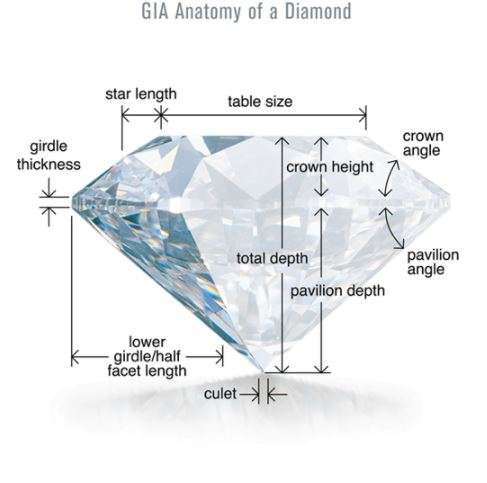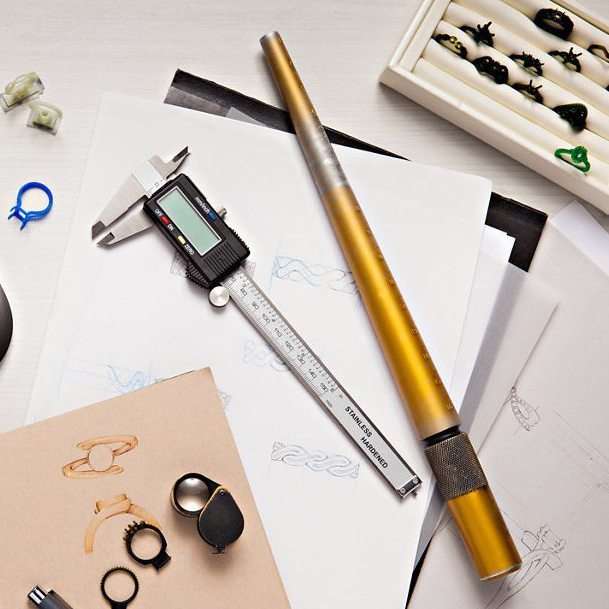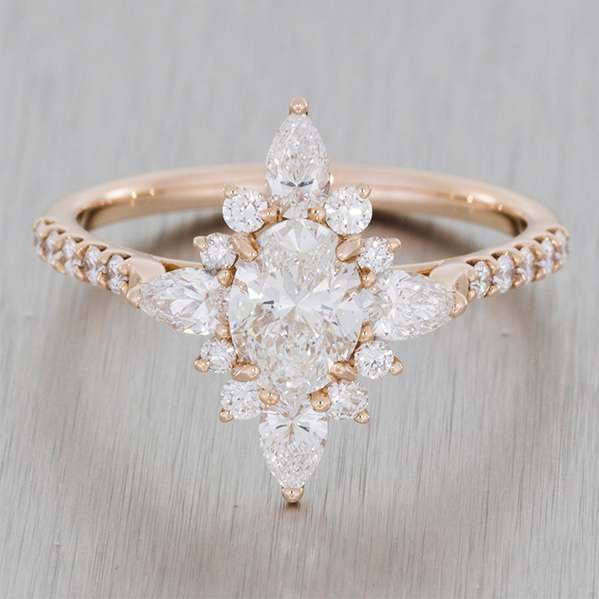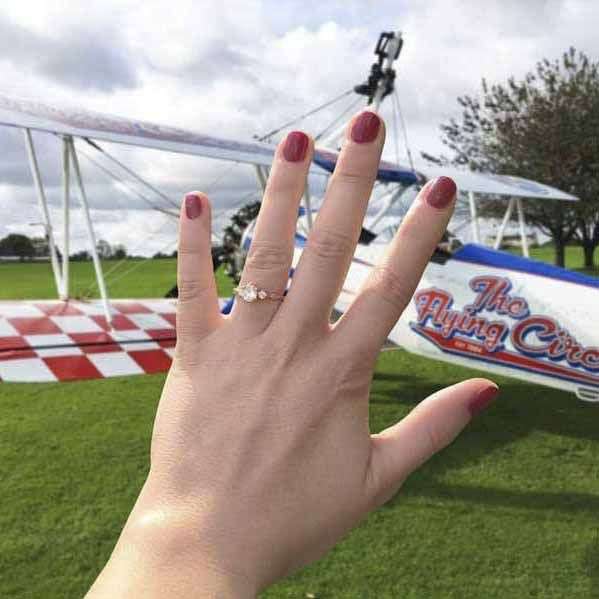Understanding your diamond allows you to understand its unique characteristics, beauty and true value
What Is Diamond Anatomy?
When purchasing a diamond it is helpful to have an understanding of a diamonds anatomy to truly appreciate diamonds and all of their intricacies. It is important that you consider the most important components which bring the diamond to life: the diameter, table, and depth. These components figure prominently into determining the diamonds cut grade.
When people think of “cut,” they often think of the shape of a diamond rather than its actual cut quality. Cut reflects the diamond’s fire, sparkle, and brightness, and as a value factor, it refers to a diamond’s proportions, symmetry and polish which are also known as the fourth ‘C’. While understanding a diamond’s anatomy can be beneficial, it should not supersede the importance of or be confused with cut grade.
The diagram below visually labels all of the major parts of a diamond; its ‘anatomy’.

What Does It All Mean?
We want to share and extend your diamond knowledge so that when we come to creating your forever piece, you have been given all the knowledge you desire.
Diameter: The width of the diamond as measured through the girdle.
Table: The largest polished facet located on the top of the diamond
Crown: The top portion of a diamond extending from the girdle to the table. The crown is made up of bezel facets (crown mains), star facets, upper girdle facets (upper halves), and a table facet.
Girdle: The small vertical plane around the perimeter of the diamond. It can vary in thickness and can be faceted, polished or unpolished. Durham Rose recommends avoiding girdles either extremely thin as this can make the diamond more susceptible to chipping or extremely thick as this can make the diamond carry a lot of weight around the belly of the stone. This can cause the diamond to look smaller if compared to others with a similar weight.
Pavilion: The bottom portion of a diamond, extending from the girdle to the culet.
Culet: The tip of the pavilion. It can be pointed or have an additional facet varying in size from very small to large.
Depth: The total height of a diamond measured from the culet to the table.
“Diamond Anatomy: If you have ever wondered what a diamond crown, or the table of a diamond is, let our jewellery experts share their knowledge with you on the ‘Anatomy of a Diamond’.”
More Like This
Discover how our rings are more bespoke, use higher spec diamonds... but for a lower price
Independently rated 9.8/10 - read how we've made that special moment just that little bit extra special.
Get in touch with one of our incredible ring designers
Our team and their wealth of experience will seamlessly guide you through the design process and create a unique, one off timeless piece of jewellery.

Get in touch with one of our incredible ring designers
We've trodden the path hundreds of times before so whether you have a clear idea about your requirements or are just looking for more information, let us guide you seamlessly through the journey by getting in touch today.














